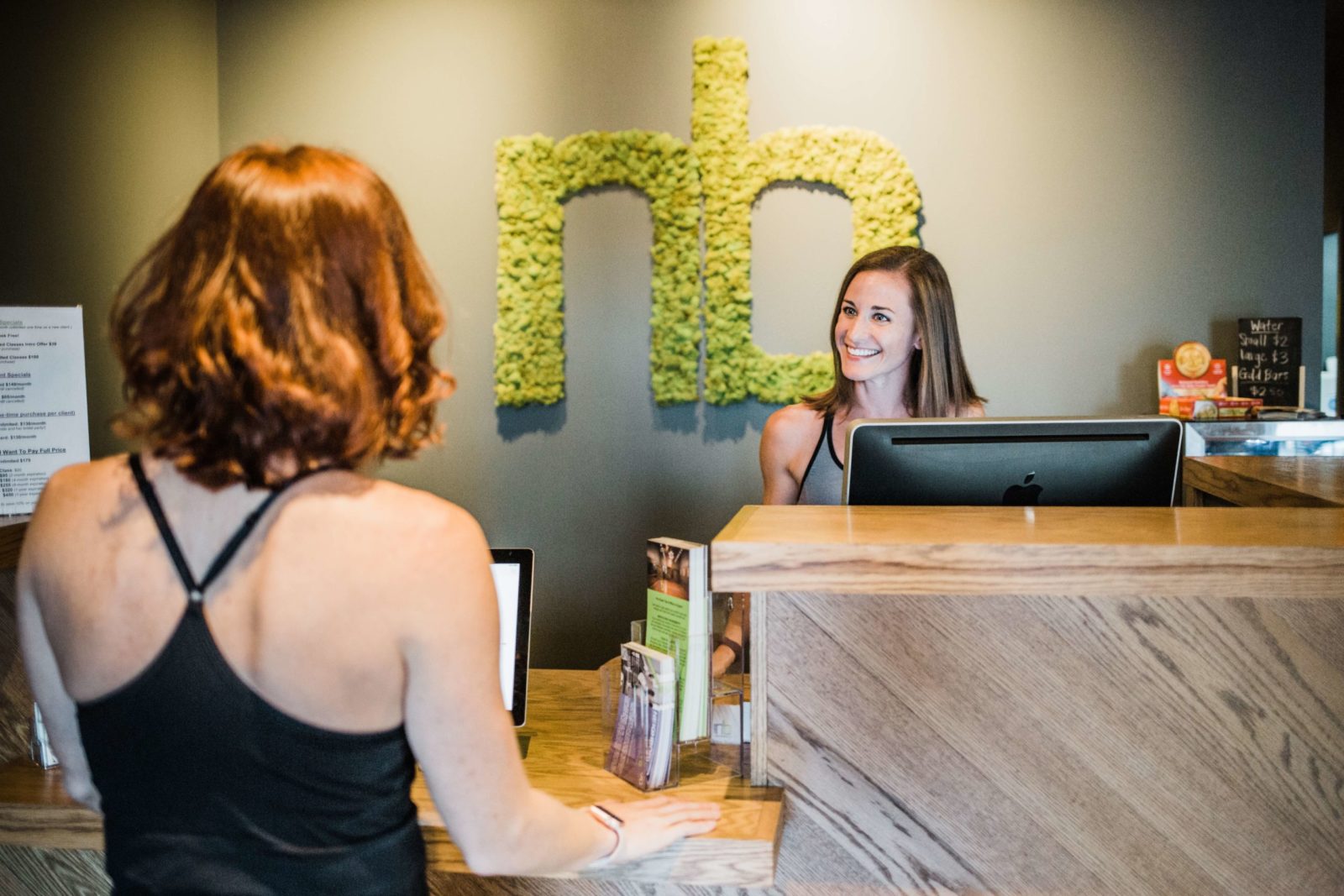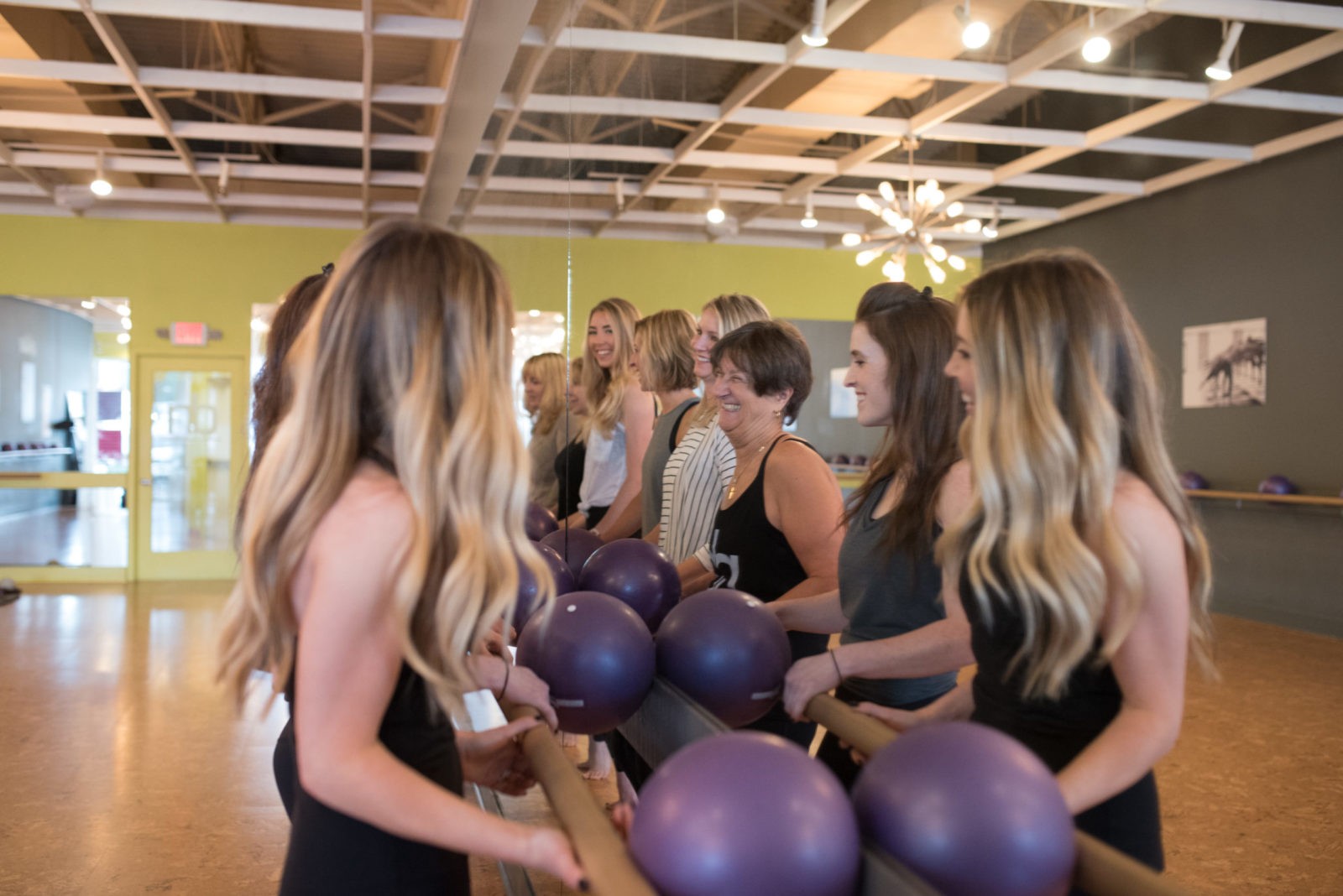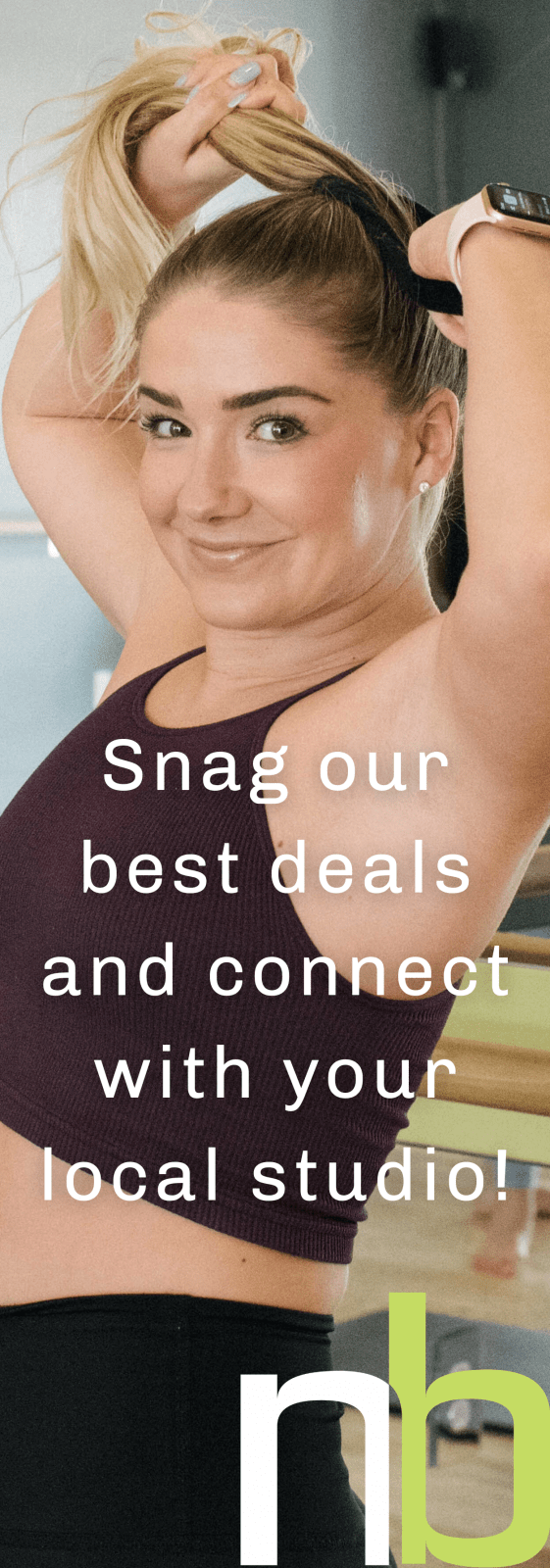Our Top 5 Tips For Your First Neighborhood Barre Class
Summer is slowing down, and the arrival of fall means more people are ready to get back into, or start, a routine. With more new clients than usual heading through the studio doors this month, we want to make sure you are prepared and feel confident to conquer your first Neighborhood Barre class with flying colors. So here’s our top 5 tips to master your first barre class like a tucking pro.

1. Arrive early: The biggest mistake a new client can make is breezing in 2 minutes before class starts, expecting to put their shoes in a cubby and hit the ground running. Whether you’ve tried barre elsewhere before, or not, you really must arrive 15 minutes early. (The good news is you’ll likely get first dibs on a mat, shoutout to the back corner crew.) This gives your instructor time to review your paperwork with you, which will cover any current injuries, pregnancies, or other medical conditions that may affect your workout. We also discuss your current exercise program (if anything) and fitness goals, so we can set the expectation of where you will meet the workout today, also based off of the exercises planned for that day’s class. We like to give each new client a quick orientation around the studio, and a brief barre 101 to cover the most common terms and body-weight bearing resistance basics. Class will make so much more sense if you get in a quick cliffs notes version prior to start time. The absolute worst is telling your instructor that you recently tore your ACL, after class. So please protect your body, and value your own time, by arriving early.
2. Less (equipment) is more: We’ve all had that first class, and naively thinking “I got this” before walking in. Twenty minutes later, you’re asking yourself “Wait, put the tube around what ankle and which instep? Which way are we facing?” during class. We strongly encourage you, especially if you are brand new to barre, to take your first class with minimal to no equipment. There’s already a learning curve to exercising this way: focusing on your posture; constantly engaging your core; realizing just how small an isometric movement really is; while also awakening muscles you didn’t even know existed. Classically the equipment adds a resistance challenge, but you want to really step into your own body’s awareness, and know what it actually feels like to only use a muscle contraction to perform each movement. Consider beginning each exercise with the intent of mastering your own body weight first, and know the equipment is always there if you feel like it’s smooth sailing and the dots are connecting. Remember, your own body is truly the only thing you need to work out in our classes.

3. Start from the top: The set-up of each exercise is imperative for your success. We outline where your body should be from head to toe – and it matters. For example, the turnout of your feet affect if you’re going to engage your inner/outer muscles like hip and adductors, versus stacking your feet parallel to isolate the front/back muscles like quads and hamstrings. Posture also plays an important role in the work migrating away from the intended muscle. For example, when we hinge forward from the waist in thigh exercises, you’re now activating your hamstrings and glutes. The work stays isolated through the thighs when ears, shoulders, and hips remain stacked. It’s the same concept when you exercise with floating heels versus popped heels in thigh work. The exercise becomes more intense for the quads the higher your heels lift. Focus less on having the perfect viewpoint of what your instructor is doing during an exercise set up, and really tune into the finer points of what’s she’s saying. She’ll continually provide body positioning tips and quick checkpoints for you throughout class. You could even take this class blindfolded and totally ace it, if you are listening intently to your instructor.
4. Slow and steady: This is not your standard aerobic exercise class. We are actually turning that concept upside down. Bigger, faster, harder is NOT better here. It’s small, slower, controlled and precise. Think about if you are seated in a chair and you start to get up, but someone’s standing behind you pressing your shoulders down. Your thighs have to really grip to catch your body. That’s what we want you to feel like in class – like someone is trying to stop you when you’re lifting up, or holding onto your wrist or ankle when you’re tracing a small circle during an arm or seat exercise. Your instructor is always cueing a point of opposition to create further resistance, and a deeper activation of the muscle, using your own body weight. It may be smaller than you think you’d move, but we promise it’s challenging. And remember if the ‘tuck’, or another sprint/small movement in class is throwing you off, the number one rule in barre is to challenge yourself through holds. Just freezing your body at your lowest position with tight, engaged muscles will still deliver the fatigue we’re looking for in barre to stimulate muscle growth and a greater calorie burn in class. Shaking during an exercise is your body’s response to working hard, which means you’re doing it right! That being said, keep in mind new clients fatigue quickly in class, so expect to only complete 50% – 60% of most exercises initially. Don’t be embarrassed to take breaks. Your instructor will urge you to do this, over compromising your alignment and increasing risk of injury. Baby steps, my friend.

5. Try, try again: Remember, everyone in that room has had their first class experience. And everyone in the room came back to try it again. Barre is definitely not a one-and-done workout. The number one piece of advice our Barre Stars (clients who reach 100 – 1,000 class visits) give to new clients is “Keep going!” It’s not always love at first tuck for everyone. Barre is a challenging workout and you’re not going to be perfect (even our instructors aren’t perfect when taking class! We’re all human.) Give yourself grace, and the courage to try it at least once more. By class three, your body starts to ease into each posture and that ubiquitous ‘tuck’ starts to connect with your thighs. The other consensus from our Barre Stars is how quickly you’ll see a visible change in your body. In a world where we expect immediate gratification, barre does deliver results impressively quick, even if it may not exceed every first impression. Lastly, keep in mind that Neighborhood Barre offers a dynamic exercise regimen, complete with multiple class styles to create a one-stop studio experience. We can confidently say that we have a barre class that is perfectly suited for you. You may just have to try it more than once, and perhaps more than one class style. What advice would you add to this? Comment and share!


